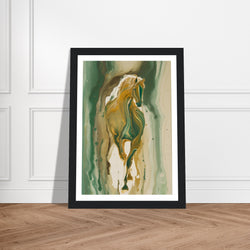Pop art, a movement that emerged in the mid-1950s in Britain and the late 1950s in the United States, revolutionized the art world and challenged the traditional notions of what art could be. This movement was characterized by its use of popular culture imagery and techniques, often employing mass-produced commercial objects and media symbols.
Two of the most influential artists associated with the pop art movement were Andy Warhol and Roy Lichtenstein. They redefined art by appropriating images from popular culture and presenting them in entirely new ways. Their work not only reflected the changing consumer culture of the time but also commented on themes of mass production, advertising, and the commodification of art.
Andy Warhol: The King of Pop Art
Andy Warhol, a central figure in the pop art movement, is perhaps best known for his iconic images of Marilyn Monroe, Elvis Presley, and Campbell's Soup cans. His work blurred the boundaries between high and low art, as he elevated everyday objects and celebrities to the status of art.
Warhol's fascination with celebrity culture and consumerism is evident in his famous silkscreen prints, which were produced using a commercial printing technique. By using this method, Warhol was able to create multiples of the same image, mimicking the mass production of consumer goods. In doing so, he challenged the notion of originality and uniqueness in art.
Roy Lichtenstein: The Master of Comic Book Art
Roy Lichtenstein, another prominent figure in the pop art movement, drew inspiration from comic books and advertisements. His signature style was characterized by bold, colorful, and highly stylized reproductions of comic strip panels. Lichtenstein's use of Ben-Day dots, a printing technique commonly used in comic book production, further emphasized his fascination with popular culture imagery.
By appropriating and re-contextualizing images from comic books, Lichtenstein challenged the traditional hierarchy of art genres. He elevated mass-produced and often dismissed forms of art, such as comics, to the level of fine art. In doing so, he not only ushered in a new era of artistic expression but also challenged the preconceived notions of what could be considered art.
Icons of the Pop Art Movement
Warhol and Lichtenstein are just two of the many artists who contributed to the pop art movement. Their work not only made a significant impact on the art world but also infiltrated popular culture and left a lasting legacy.
The pop art revolution challenged the conventional understanding of art and opened the doors to new possibilities. By incorporating images from popular culture, Warhol and Lichtenstein paved the way for future generations of artists to explore the intersection of art and everyday life.
Their work continues to be celebrated and revered today, and they remain icons of the pop art movement. Their influence can be seen in contemporary art, as artists continue to draw inspiration from popular culture and challenge the boundaries of traditional art forms.







